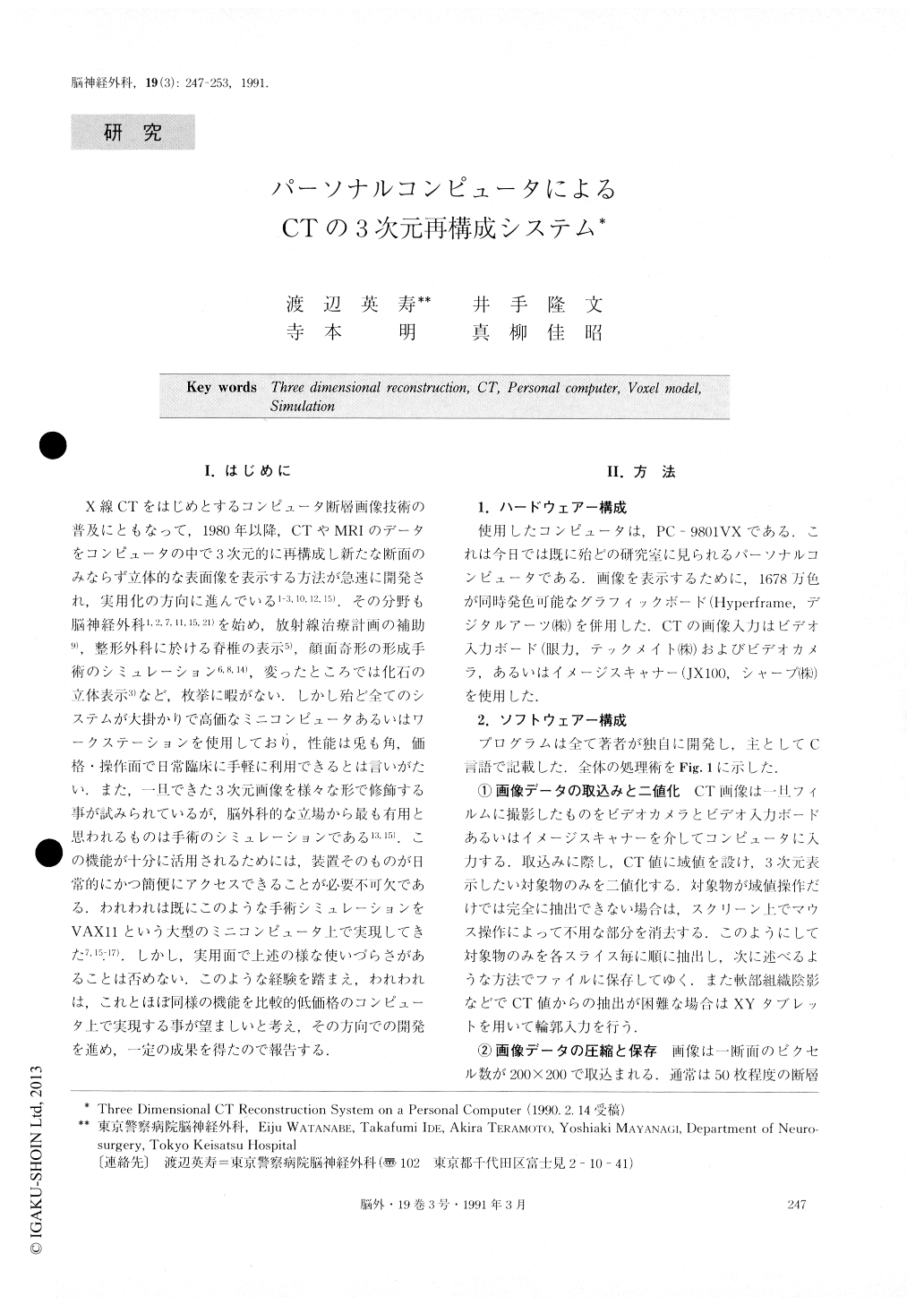Japanese
English
- 有料閲覧
- Abstract 文献概要
- 1ページ目 Look Inside
I.はじめに
X線CTをはじめとするコンピュータ断層画像技術の普及にともなって,1980年以降,CTやMRIのデータをコンピュータの中で3次元的に再構成し新たな断面のみならず立体的な表面像を表示する方法が急速に開発され,実用化の方向に進んでいる1-3,10,12,15).その分野も脳神経外科1,2,7,11,15,21)を始め,放射線治療計画の補助9),整形外科に於ける脊椎の表示5),顔面奇形の形成手術のシミュレーション6,8,14),変ったところでは化石の立体表示3)など,枚挙に暇がない.しかし殆ど全てのシステムが大掛かりで高価なミニコンピュータあるいはワークステーションを使用しており,性能は兎も角,価格・操作面で日常臨床に手軽に利用できるとは,「いがたい.また,一旦できた3次元画像を様々な形で修飾する事が試みられているが,脳外科的な立場から最も有用と思われるものは手術のシミュレーションである13,15).この機能が十分に活用されるためには,装置そのものが日常的にかつ簡便にアクセスできることが必要不可欠である.われわれは既にこのような手術シミュレーションをVAX11という大型のミニコンピュータ上で実現してきた7,15-17).しかし,実用面で上述の様な使いづらさがあることは否めない.このような経験を踏まえ,われわれは,これとほぼ同様の機能を比較的低価格のコンピュータ上で実現する事が望ましいと考え,その方向での開発を進め,一定の成果を得たので報告する.
Abstract
A new computer system to produce three dimension-al surface image from CT scan has been invented. Although many similar systems have been already de-veloped and reported, they are too expensive to be set up in routine clinical services because most of these systems are based on high power mini-computer sys-tems. According to the opinion that a practical 3D-CT system should be used in daily clinical activities using only a personal computer, we have transplanted the 3D program into a personal computer working in MS-DOS (16-bit, 12 MHz) . We added to the program a routine which simulates surgical dissection on the surface image. The time required to produce the surface image ranges from 40 to 90 seconds. To facilitate the simula-tion, we connected a 3D system with the neuronaviga-tor. The navigator gives the position of the surgical simulation when the surgeon places the navigator tip on the patient's head thus simulating the surgical exci-sion before the real dissection.

Copyright © 1991, Igaku-Shoin Ltd. All rights reserved.


